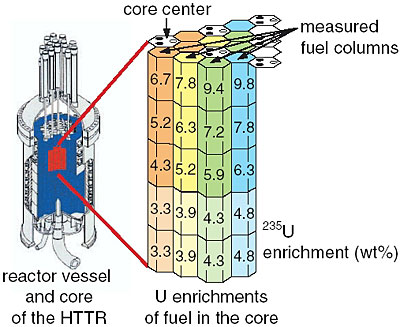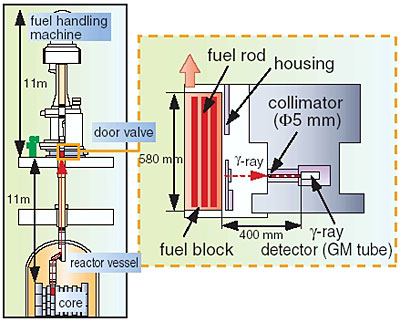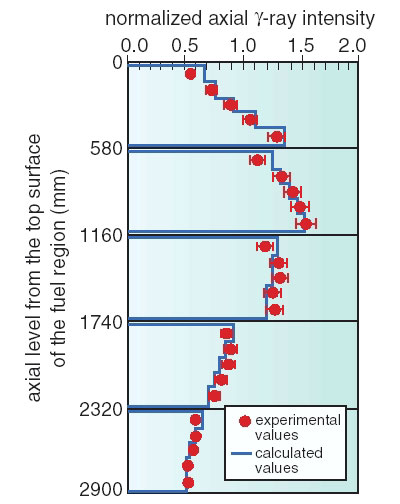The high temperature gas cooled reactor (HTGR) is expected to be selected as one of the future power reactors because of its inherent safety and high thermal efficiency. The High Temperature engineering Test Reactor (HTTR), which employs coated particles as fuel, helium (He) gas as a coolant, and graphite as a moderator, has been developed as the first HTGR in Japan.
The HTTR core can produce hot He gas (850/950 degree Celsius) stably, but the maximum fuel temperature must not exceed the limiting value. Therefore, the power distribution that determines the temperature distribution of the core should be optimized. This optimization was a main issue addressed in the HTTR's design, and it was achieved by use of neutronics calculation codes. Twelve distinct kinds of fuel enrichment were used to adjust the three-dimensional power distribution to the optimum profile (Fig. 1-10). However, the optimized distribution cannot be verified until at least the post-irradiation fuel examination planned after the next fuel exchange in a few years.
We experimentally examined HTTR's power distribution by using the existing fuel handling machine, because gamma-ray distribution can be measured from fuel blocks that are withdrawn from the core by remote control when the reactor is shutdown. The intensity of gamma-rays and the power density have a proportional relationship. Fig. 1-11 shows the experimental method used.
Since the experimental conditions were far from a laboratory's level of precise control, there were constrains on the measurement accuracy. Especially, positioning was less accurate than expected due to a large size of the fuel handling machine. The mechanism causing the position shifts and its effect were determined by using measurement data of up to twenty thousand points. This problem was solved by minimizing the spatial uncertainties with the corrections based on the results obtained.
Fig. 1-12 shows the experimental results of gamma-ray distribution. The experimental distribution is in good agreement with that calculated by the Monte Carlo code MVP. The experiment confirmed that the power distribution was successfully adjusted to the expected distribution specified during the reactor design phase. The results from the HTTR's experiment are important data for the establishment of HTGR technologies. They are also useful for future HTGR design studies.
|


